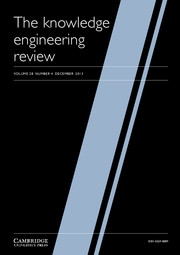Article contents
Studying the use and effect of graph decomposition in qualitativespatial and temporal reasoning
Published online by Cambridge University Press: 12 October 2016
Abstract
We survey the use and effect of decomposition-based techniques in qualitativespatial and temporal constraint-based reasoning, and clarify the notions of atree decomposition, a chordal graph, and a partitioning graph, and theirimplication with a particular constraint property that has been extensively usedin the literature, namely, patchwork. As a consequence, we prove that a recentlyproposed decomposition-based approach that was presented in the study byNikolaou and Koubarakis for checking the satisfiability of qualitative spatialconstraint networks lacks soundness. Therefore, the approach becomes quitecontroversial as it does not seem to offer any technical advance at all, whileresults of an experimental evaluation of it in a following work presented in thestudy by Sioutis become questionable. Finally, we present a particular treedecomposition that is based on the biconnected components of the constraintgraph of a given large network, and show that it allows for cost-freeutilization of parallelism for a qualitative constraint language that haspatchwork for satisfiable atomic networks.
Information
- Type
- Articles
- Information
- Copyright
- © Cambridge University Press, 2017
References
- 6
- Cited by

